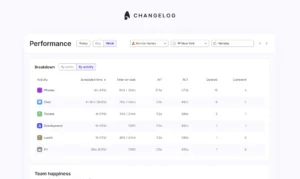
What channels work best for your team

Choosing the right channels for your customer service team
In the age of increasing customer expectations and an increase in competition, customer service has evolved beyond traditional phone and email support.
While customers demand swift and efficient responses, it’s equally crucial to ensure that the channels you use are efficient, manageable, and scalable for our customer service teams.
A satisfied and empowered team leads to happier customers, but how do you decide which channels are best?
Traditional channels: the backbone of customer service
Phone support ☎️: the phone remains a dominant channel for many businesses. Its strength lies in its immediacy and the personal touch it offers. For customer service teams, phone support can handle complex issues effectively. However, it can be resource-intensive, requiring extensive training and sometimes leading to long waiting times for customers.
Email Support 📧: email allows teams to manage queries asynchronously, giving agents the time to craft detailed responses. While it offers a record of communication, it can sometimes lead to prolonged back-and-forth exchanges, potentially delaying resolution. For some customers, it makes getting in touch easier as they can do it without fear of a wait time or an escalation process.
Digital channels: meeting modern demands
Live chat 💬: as e-commerce and digital services grow, live chat has become an indispensable tool. It offers the immediacy that modern customer demands, and agents can often handle multiple chats simultaneously.
With the integration of chatbots, initial queries can be filtered, allowing agents to focus on more complex issues. However, it demands real-time attention, making it essential to have a well-staffed team during peak hours.
Social media : platforms like Twitter and Facebook have evolved from mere marketing tools to essential customer service channels. They meet customers where they spend a significant amount of their time. For customer service teams, these platforms present an opportunity for proactive engagement, turning potential PR crises into showcases of excellent service. However, the public nature of these platforms is a double-edged sword. While they offer great visibility, unresolved complaints or missteps can spiral downhill very easily, very quickly.
Messaging apps 📱: with the ubiquity of apps like WhatsApp and Telegram, customers now expect businesses to be reachable via their favourite messaging platforms. These channels are direct and personal, allowing for asynchronous communication. For teams, they can be integrated with bots to handle initial queries, but high volumes can sometimes be overwhelming.
Self-service portals/FAQs: an often-underestimated tool, self-service portals and FAQs can significantly alleviate the burden on customer service teams. By preemptively addressing common queries, they enable agents to focus on unique or intricate issues. To maximise their utility, it’s essential that they receive regular updates, ensuring their continued relevance and effectiveness.
Factors to consider for team efficiency
- Nature of business: financial services firms, given the intricate and confidential nature of their operations, often find multichannel support indispensable. Conversely, in the healthcare sector, where the urgency of queries often demands immediate attention and clarity, traditional phone support becomes the preferred choice. Meanwhile, software companies, catering to a tech-savvy clientele, might discover that FAQs and asynchronous chats are particularly effective, allowing users to navigate issues at their own pace.
- Customer demographics: understanding your audience is key. Younger audiences might gravitate towards messaging apps or social media, while older demographics might find comfort in traditional channels like phone or email.
- Budgetary constraints: financial considerations play a pivotal role. While larger enterprises might afford diverse channels and advanced CRM integrations, smaller businesses need to prioritise based on budget, ensuring they get the best bang for their buck.
- KPIs and urgency: if rapid resolutions are at the forefront of your KPIs, channels like live chat or phone support should be prioritised. However, if your metrics allow for a longer resolution window, asynchronous channels might be more appropriate.
- Team dynamics & resources: the size, training, and working patterns of your team play a pivotal role in determining the most suitable channels. If your team operates in shifts or across various time zones, 24/7 support through channels like live chat might be feasible. However, such channels might also demand more agents during peak hours and specialised training. On the other hand, asynchronous channels like email can be managed with fewer resources and are adaptable to teams that don’t operate around the clock. It’s crucial to align the chosen channels with the team’s capabilities and expertise.
- Tools & integration: ensure that the chosen channels can be seamlessly integrated into your existing CRM systems or scheduling tools. This ensures a smooth workflow for the team and a unified experience for the customer.
Conclusion
Choosing the right customer service channels can be influenced by multiple factors. It’s a delicate balance between customer preference, business nature, budgetary considerations, and team dynamics. By adopting a holistic approach and continuously reassessing the chosen channels’ effectiveness, businesses can strike the perfect balance, leading to satisfied customers and a motivated, efficient customer service team.
Want to read more about scaling your customer support team?
Check out our eBook here


